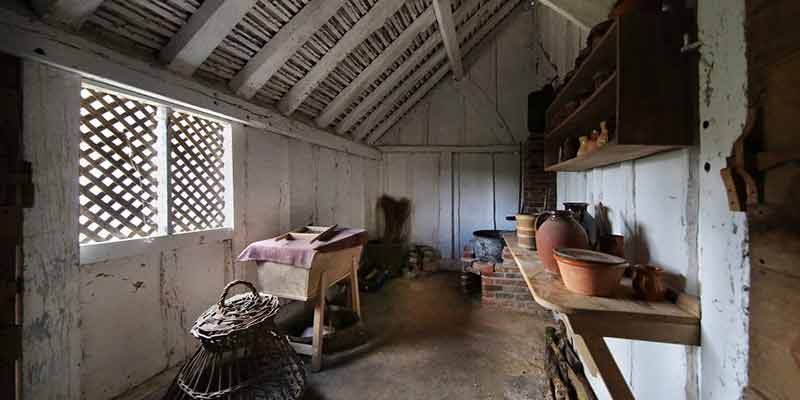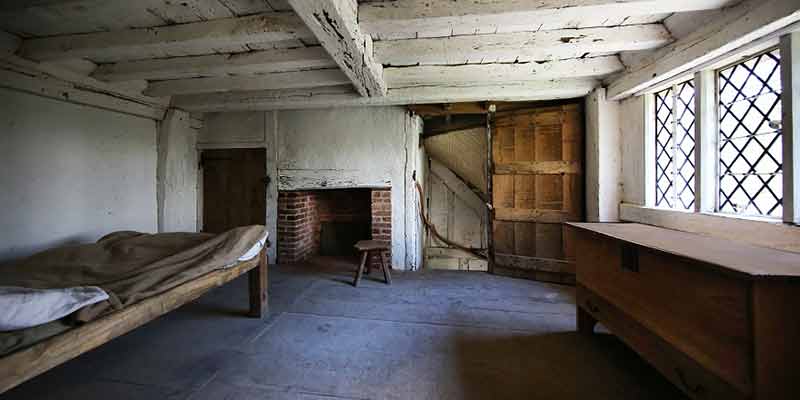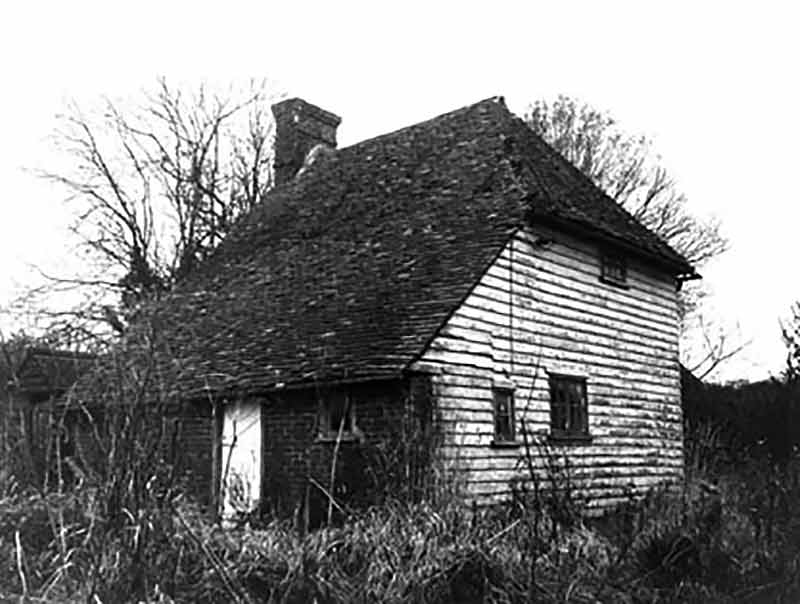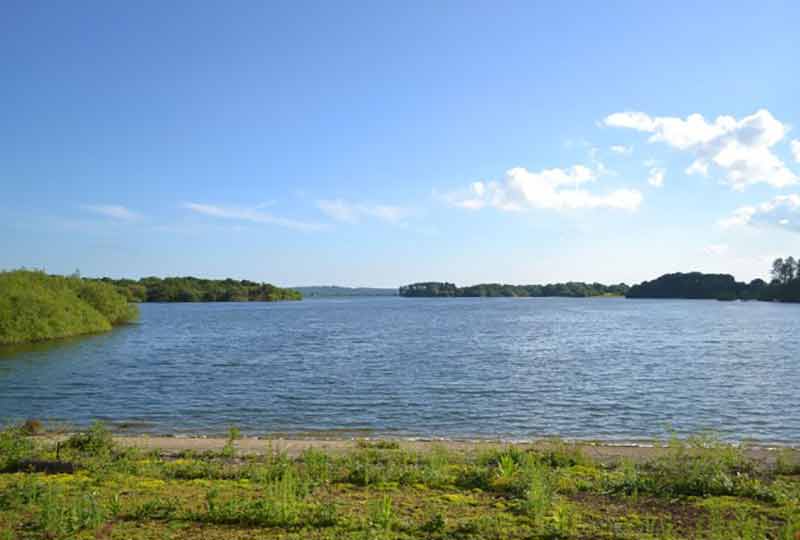
Tindalls Cottage was probably built between 1700 and 1725. Nearly all of the oak used in the timber frame was re-used from other, earlier, buildings. It is of the same general type as Poplar Cottage, with a gable-end chimney and a hipped terminal at the opposite end.
The building was dismantled in 1974 by the Robertsbridge and District Archaeological Society in advance of the construction of the Bewl Bridge Reservoir (now called Bewl Water). It remained in store until February 2012 when the timbers were removed to the upper floor of the Downland Gridshell so that they could be recorded, interpreted and repaired.
The frame was re-erected on its new site over a weekend in September 2012 and opened as an exhibit building in July 2013.
Share
Overview
Dates From
1700—1725
Dismantled
1974
Reconstructed
2012
Original Location
Ticehurst, East Sussex
Building History
Interior Plan
In plan the cottage has two rooms within the main range downstairs. The outer room (the kitchen) contains a fireplace and bread oven and has a brick floor. The inner room (the buttery) is unheated and has an earth floor.
 There are two service rooms, both with earth floors, located within an outshot at the back of the house. The larger of these (the brewhouse) contains a copper or ‘furnace’. The smaller room was probably used as a ‘milkhouse’ or dairy.
There are two service rooms, both with earth floors, located within an outshot at the back of the house. The larger of these (the brewhouse) contains a copper or ‘furnace’. The smaller room was probably used as a ‘milkhouse’ or dairy.

On the first floor there are two rooms, a ‘kitchen chamber’ (with a fireplace) and an unheated ‘buttery chamber’. A narrow staircase leads up to a further, small, unheated room called a ‘garret’ (not open to the public).


The Family
Its name, ‘Tindalls’, derives from the surname of its occupants from 1748 to 1806. John Tindall (1) moved into the cottage in 1748 together with his wife, Ann. They had six children, including a still-born baby in 1758 and a son, Stephen who died in 1767 aged six.

John died in 1766, and his widow continued to occupy the cottage until her own death in 1780. It was then occupied by their son, John Tindall (2), his wife Mary and their seven children. He died in 1806.
The Tindalls were husbandmen, farming about 26 acres.
Top 3 Interesting Facts

Moved for a Reservoir
The Bewl Water reservoir construction meant this early 18th century house had to be moved. Its oak frame has many timbers from earlier buildings.

Raising the Frame
Following repairs, it was possible to raise the frame over a weekend in 2012 and thereafter complete infill panels.

The Tindalls Family
The house is named after the family who lived there from 1748-1806. They were husbandmen, farming c. 26 acres.







